Transportation in the Philippines: How to Get Around
Traveling around this beautiful country can be tricky – hectic traffic, bad roads, and poor public transport all create obstacles. Nomad Ronan offers his tips on the safest, cheapest, and most efficient transportation options.
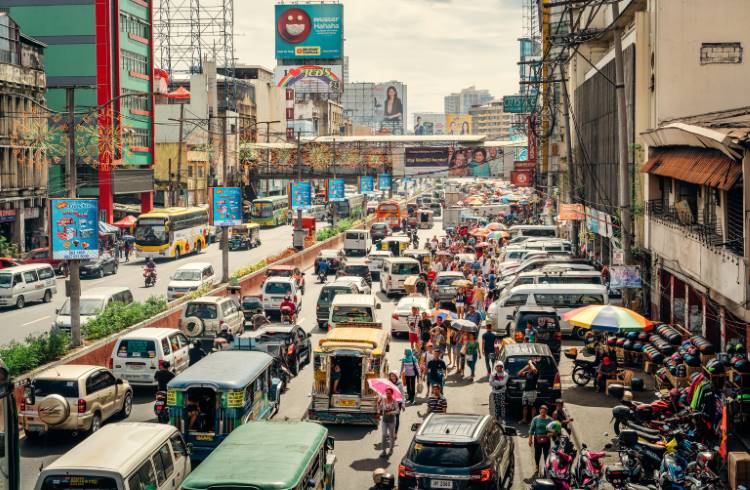 Photo © Getty Images / Nikada
Photo © Getty Images / Nikada
The Philippines is a wonderful destination but getting around can be challenging. Here’s some advice on safely navigating the various modes of transport, and the cheapest and most efficient ways to get from A to B.
- The rail system in Manila and beyond
- Buses in the Philippines
- Should you rent a car?
- Are Jeepneys a good option?
- Taking taxis in the Philippines
- Traffic in Manila
- Safety on public transport
- Renting bicycles in the Philippines
- Domestic air travel
The rail system in Manila and beyond
The Philippines has less than 100mi (160km) of operational railway, with hundreds more miles of track laying unused. While its government has grand plans to extend this rail network, for now it’s of no real use to travelers. Except, that is, for Manila’s three elevated rail systems – LRT1, LRT2, and MRT3 – which are very cheap, efficient, and reach a decent number of the city’s tourist attractions. By loading money on to a Beep Card, visitors can do contactless payments on all three of those services.
Buses in the Philippines
Due to its small rail network, the Philippines relies heavily on buses for regional travel. These services vary wildly in quality. Many use old, run-down buses which have hard seats, minimal leg room and are frequently overcrowded.
If you’re traveling to or from a little-known destination these basic buses may be your only option, as I found when I squeezed into a rickety bus from Manila to the volcano town of Tagaytay. But on busier routes, particularly linking popular tourist destinations, you can get a premium bus. These modern vehicles are comfortable and have free Wi-Fi and an on-board toilet.
Regardless of what type of bus you choose, your journey will be very slow due to thick traffic and bad roads. For example, the spectacular Banaue rice terraces are just 160mi (257km) north of Manila. In Western countries, such a drive may take less than three hours. Whereas that road journey from Manila to Banaue is an exhausting nine hours.
Should you rent a car?
Prior to the pandemic, which greatly reduced road usage, more than 10,000 people died in road accidents every year in the Philippines, and tens of thousands more suffered serious injuries. Heavy traffic, erratic motorists, and poor road quality make it a hazardous place to drive, especially for foreigners unfamiliar with these conditions. There’s no need to self-drive in the Philippines.
If you’re taking a day trip, then for as little as US $40 per day any large hotel will happily arrange a private car and driver. That is much more comfortable and convenient than bus travel. And, because of the high standard of English in the Philippines, I’ve also found private drivers double up as tour guides, offering me insight and guidance on my destinations. If you’re just exploring within a city, then catching regular taxis will do the job.
Are Jeepneys a good option?
Within urban areas, roads are filled with these old US-military jeeps converted into buses, called jeepneys. Brightly decorated, they’ve become a symbol of the Philippines, similar to the iconic tuk-tuks in Thailand. Just like tuk-tuks, riding in a jeepney is a unique and memorable travel experience. But, once you’ve ridden in either of them once, their appeal wears off quickly. Jeepneys are extremely cheap, but they’re also crowded, hot, and their permanently open windows leave passengers shrouded in exhaust fumes.
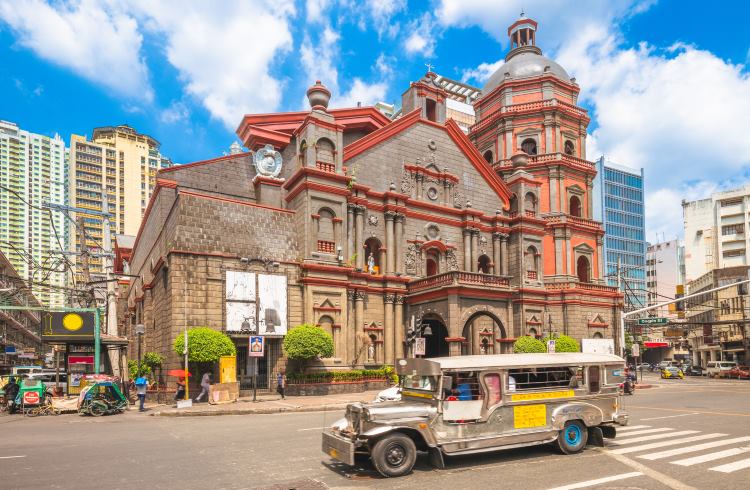
Taking taxis in the Philippines
Motorbike taxis are handy but risky
The easiest way to penetrate the Philippines’ heavy traffic is on the back of a motorbike taxi, which can weave through gaps between vehicles. In addition to being cheap and convenient, they’re also dangerous. Precious few of these taxis provide passenger helmets, as I discovered while trying to beat Manila gridlock. After a 10-minute ride during which we swerved perilously close to countless vehicles, I vowed never again.
Tricycle taxis
Slightly less dangerous than motorbike taxis, in my experience, are the two types of tricycles common in the Philippines. One type, where passengers sit behind the driver, is similar to a tuk-tuk and can be handy for a short trip when there are no proper taxis around. The other – a motorcycle with a makeshift sidecar – is more unnerving. In Tagaytay I climbed into one, which bounced and rattled and felt like it could detach at any moment, perhaps because of my bulky frame. Like jeepneys, they may be fun for a one-off jaunt, but otherwise pale in comparison to regular taxis.
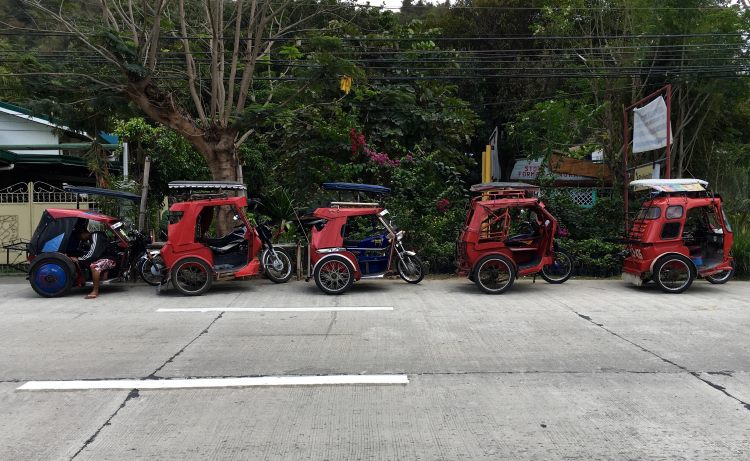
Regular taxis are the best option
They’ll get stuck in traffic more than a motorcycle taxi and are less exotic than a jeepney or a tricycle. But regular taxis in the Philippines are cooler, cleaner, safer, more comfortable, more private, and yet still incredibly cheap. In Manila, for example, a metered taxi trip of 5mi (8km) will cost as little as US $3. Sometimes, especially during peak hour, taxi drivers won’t use the meter and will instead quote a higher, flat fare. But even then, they’re normally great value.
Traffic in Manila is a nightmare
After 20 minutes of my taxi standing almost stationary on a logjammed Manila street, I understood why it ranks as having the second-worst traffic of any city in the world, according to a study released in 2021 by GPS company TomTom. Like any large metropolis, rush hour (7:30- 9:30am and 5-7pm) is to be avoided for road travel in Manila. Then again, I’ve been caught in painful traffic there at all times of day. I’ve also zoomed around, relatively speaking, at random hours. There really is little logic to Manila traffic, so always allow generous time to reach your destination.
Safety on public transport
Pickpocketing and robbery are commonplace in the Philippines' cities. Western tourists already stand out to petty criminals, so don’t make yourself an even more obvious target by flaunting cash or valuables. Maintain a firm grip on your phone and camera, keep valuables in a zipped bag or pocket, and be alert.
Renting bicycles in the Philippines
In the Philippines’ main tourist destinations there are many shops that rent out bicycles. While cycling may seem appealing, the reality is different. Dedicated cycle paths barely exist anywhere in the Philippines, and the roads are often uneven and crammed with erratic motorists.
Domestic air travel is very cheap
Despite only being about the same size in land area as the US states of Nevada or Arizona, the Philippines remarkably has more than 60 airports that handle passenger travel, including 13 international airports. Manila airport alone has direct flights to nearly 40 regional destinations.
Not only are they convenient, but domestic flights in the Philippines are also very cheap. Its array of budget airlines – including Cebu Pacific, Air Asia, and CebGo – offer one-way domestic airfares for as little as US $12. I once scored a return flight from Manila to gorgeous Palawan (500mi/805km distance) for just $30.
Related articles
Simple and flexible travel insurance
You can buy at home or while traveling, and claim online from anywhere in the world. With 150+ adventure activities covered and 24/7 emergency assistance.
Get a quote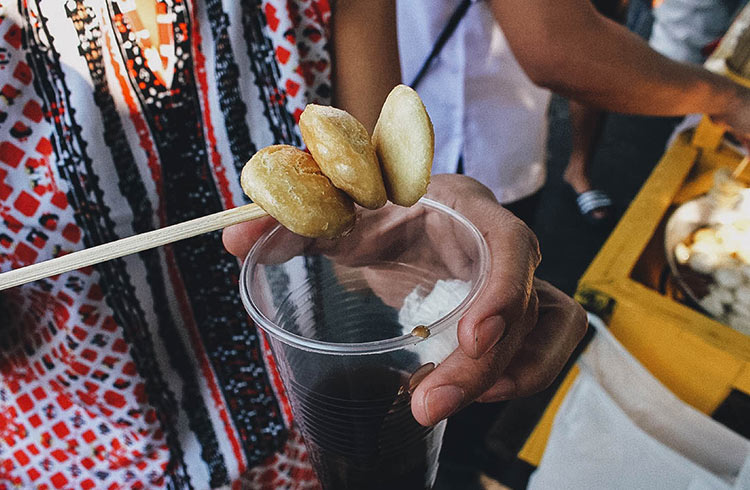
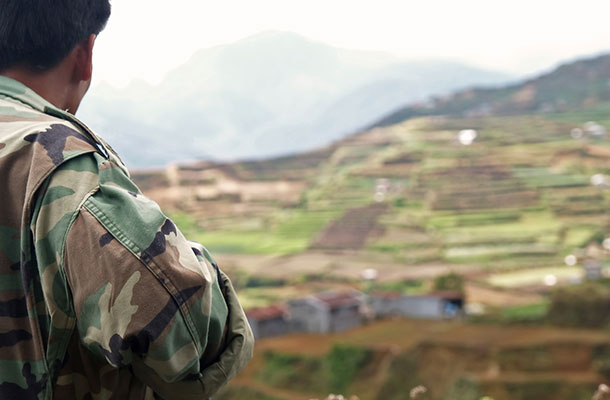

No Comments